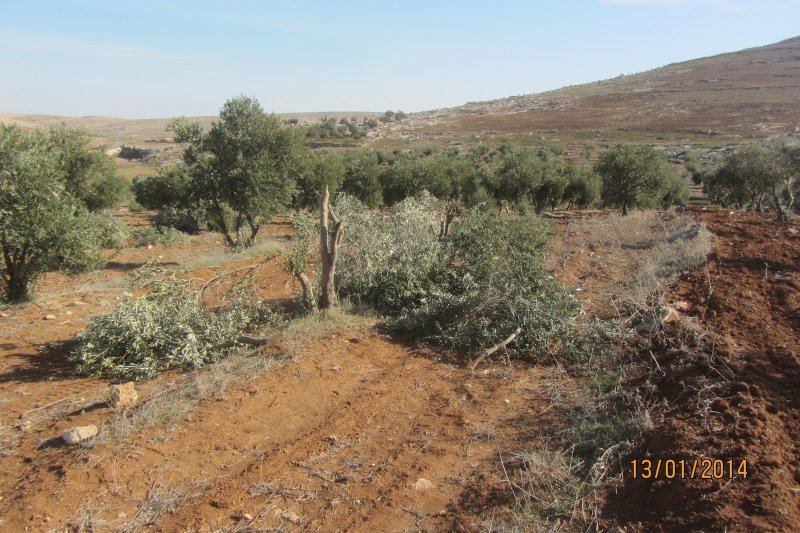Tag: Olive Trees
-
Military repression following a settler attack in Qusra
7th January 2014 | International Solidarity Movement, Nablus Team | Qusra, Nablus District, Occupied Palestine On the 7th of January in Qusra, two farmers working on their land were threatened by settlers carrying guns. Villagers helped them to chase the invaders away before being violently repressed by the army. On Friday, at 10:30 a.m., two…
-
20 olive trees destroyed in the South Hebron Hills area of At Tuwani
13th January 2013 | Operation Dove | At Tuwani, Occupied Palestine This morning Palestinians discovered 20 olive trees destroyed alongside bypass road 317 in the South Hebron Hills area of At Tuwani. The olive tree groves belongs to the Al Amor family from At Tuwani and had been planted 34 years ago. At 9.35 am the owners,…
-
Clashes in Qusra: olive trees destroyed and settlers beaten
08th January 2014 | International Solidarity Movement, Nablus Team | Qusra, Occupied Palestine Clashes between Israeli forces and Palestinian youth erupted yesterday after settlers attacked villagers from Qusra on their fields. Palestinians captured a group of settlers on their way to Qaryut after they had destroyed a number of olive trees. In the morning of the…



